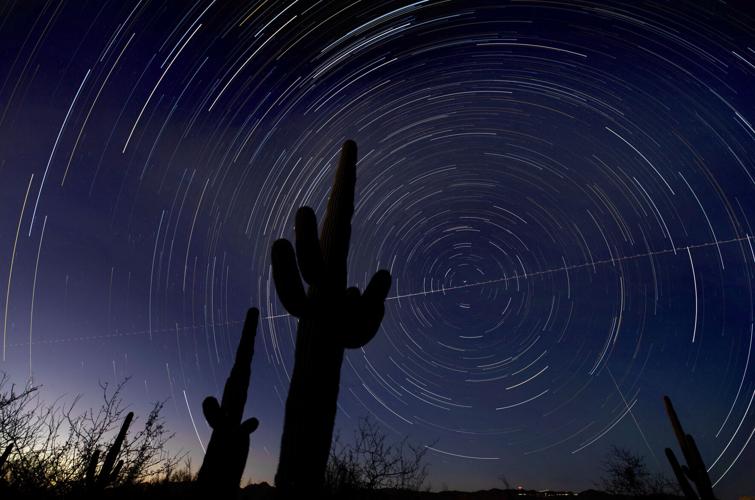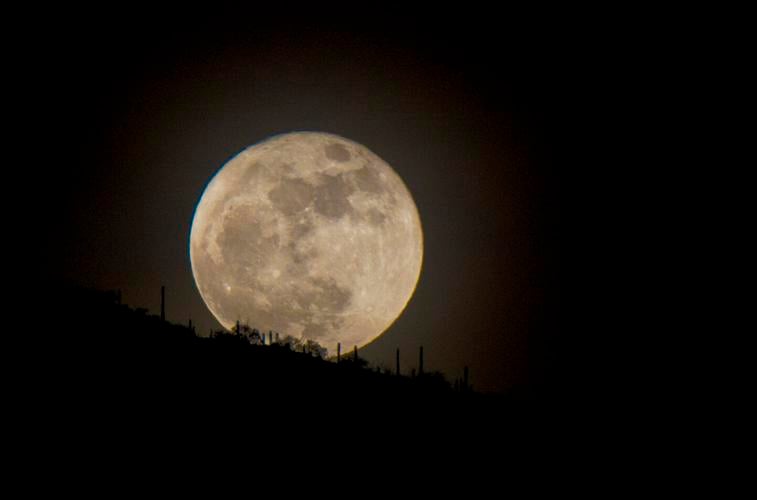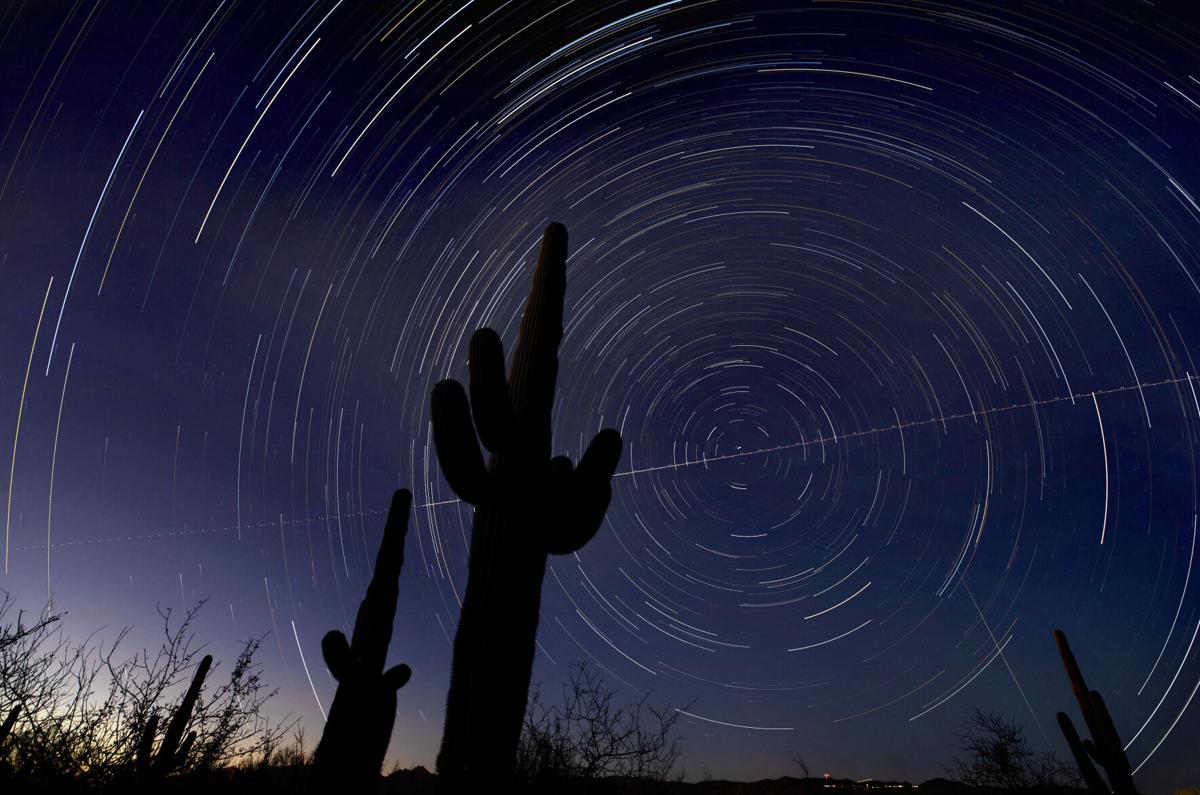The dark-sky movement was practically invented here more than 50 years ago, but Tucson has never had a certified spot to highlight its efforts to curb light pollution.
Until now.
Saguaro National Park has officially been designated as an Urban Night Sky Place by DarkSky International, a Tucson-based group that advocates for the protection of clear, star-filled night skies around the globe.
The roughly 92,000-acre park bracketing Tucson is the first urban park in Arizona and just the ninth worldwide to be recognized for its efforts to preserve and promote natural darkness near populated areas.
“We are excited to share our work to advance the preservation of Saguaro National Park’s night skies,” said Jeff Conn, acting superintendent of the park. “We are delighted to provide visitors with opportunities to experience the wonder of starry nights.”
According to DarkSky International, Saguaro earned the designation by eliminating or retrofitting old inefficient light fixtures and promoting appreciation for dark skies through its night-time programs.
“Park staff and advocates have worked very hard to demonstrate their commitment to protecting the environment and raising awareness of the importance of natural darkness and best practices for outdoor lighting,” said Amber Harrison, Dark Sky Places Program manager for the nonprofit group.
Park Ranger Spencer Burke said Saguaro has been pursuing a dark-sky designation for several years now.

A full moon rises over the mountains at Saguaro National Park, which was just designated as an Urban Night Sky Place by the Tucson-based nonprofit DarkSky International.
The park’s latest application to DarkSky International is more than 100 pages long and includes a detailed review of night-time satellite images, on-the-ground light measurements and a complete lighting inventory.
“You do really have to earn it,” Burke said.
Close to half of Saguaro’s 187 outdoor light fixtures required retrofits to meet DarkSky standards. About 90% of that work is now done, and the rest is on track for completion within the next year.
To help with the certification process, Burke said, the park received financial donations, letters of support and other assistance from such partners as the Friends of Saguaro National Park, Sky Island Alliance, Tucson Amateur Astronomy Association, the University of Arizona, Pima County and the city of Tucson.
Mayor Regina Romero and County Supervisors Chairwoman Adelita Grijalva hailed the dark-sky designation in a written statement announcing it.
“Enjoying the beauty of the night sky is one of the ways Tucsonans engage with our natural beauty,” Romero said. “Minimizing light pollution honors our desert ecosystems and ensures that the Sonoran Desert remains one of the most unique places in the world.”
Added Grijalva: “Pima County, along with our Tohono O’odham neighbors, host one of the largest optical telescopes in the world. Supporting these research facilities is of utmost importance.”
The city and the county have had light-control ordinances on the books since the early 1970s. Additional restrictions have been added and changes made over the years to reduce the community’s glare and protect the view for research telescopes at nearby Kitt Peak National Observatory, Mount Graham International Observatory, Mount Lemmon Observatory, Steward Observatory and Whipple Observatory.
In 1987, two local astronomers founded what was then called the International Dark-Sky Association to expand the fight against light pollution beyond Tucson.

A meteor streaks through a star-filled sky at Saguaro National Park.
According to the group’s website, the indiscriminate use of artificial light can “disrupt ecosystems, impact human health, waste money and energy, contribute to climate change and block our view and connection to the universe.”
The organization, since rebranded as DarkSky International, launched its International Dark Sky Places Program in 2001. The campaign encourages communities, parks and protected areas around the world to protect their night skies through environmentally responsible outdoor lighting, effective lighting policies and public education.
Flagstaff was the first place to be recognized under the voluntary program. The list of Dark Sky Places now includes more than 200 locations around the world.
Saguaro is the 17th place in Arizona to be certified by the organization, joining a list that includes Chiricahua National Monument, Grand Canyon National Park, Grand Canyon-Parashant National Monument, Kartchner Caverns State Park, Petrified Forest National Park and Tumacacori National Historical Park.
Until now, the closest Dark Sky Place to Tucson was Oracle State Park.
DarkSky International created a new city-centric designation in 2018 to emphasize efforts to protect natural darkness near densely populated areas and “draw attention to the role urban protected landscapes play in raising public awareness of light pollution.”
New Mexico’s Valle de Oro National Wildlife Refuge, 7 miles south of downtown Albuquerque, was named as the first Urban Night Sky Place in 2019.
The new dark-sky designation will be noted on signs around Saguaro, and park officials are planning some kind of celebration for early next year.
Day and night in Tucson's Saguaro National Park.







